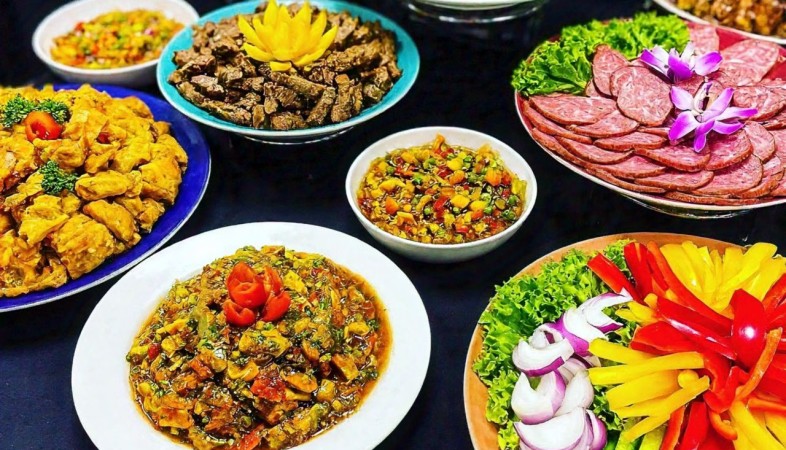Exploring Ethnic Cuisines: How Authenticity Can Attract Diverse Diners
Restaurants that successfully showcase the true essence of various ethnic foods can attract a diverse clientele eager to explore the richness of global gastronomy.
In today's culinary landscape, the demand for ethnic
cuisines is soaring, with diners increasingly seeking authentic experiences
that resonate with cultural traditions and flavors. Restaurants that
successfully showcase the true essence of various ethnic foods can attract a
diverse clientele eager to explore the richness of global gastronomy.
Authenticity is not merely a trend; it is a vital element that can distinguish
a restaurant in a crowded marketplace and create a loyal following.
To begin with, authenticity in ethnic cuisine extends beyond just ingredients and recipes; it encapsulates the entire dining experience. This experience can include the atmosphere, decor, and service style that reflects the culture of the cuisine being served. For instance, a Thai restaurant that embraces traditional decor, plays Thai music, and employs staff trained in authentic Thai service can significantly enhance the diner’s experience. Such immersive environments help diners feel transported, creating a deeper connection to the food and culture.
Using traditional cooking techniques is another way restaurants can ensure authenticity in their offerings. Many ethnic cuisines have specific preparation methods that are crucial to their flavors and textures. For example, hand-rolled pasta is essential in Italian cooking, while the slow cooking methods of Indian curries require time and patience to develop complex flavors. Restaurants that prioritize these techniques not only elevate the quality of their dishes but also showcase their commitment to authenticity, making them more appealing to discerning diners.
Ingredients also play a critical role in establishing authenticity. Sourcing high-quality, traditional ingredients can set a restaurant apart. For instance, a Mexican eatery that uses masa made from heirloom corn or a Vietnamese restaurant that imports authentic fish sauce can create dishes that resonate more with the original flavors of the cuisine. When diners taste these authentic ingredients, they can appreciate the cultural significance and history behind each dish, creating a memorable experience that encourages them to return.
Engaging with the community can further enhance the authenticity of an ethnic restaurant. Establishing relationships with local cultural organizations, hosting events, or participating in community festivals can position the restaurant as a hub for cultural exchange. This involvement not only strengthens ties with the local community but also attracts diners who are eager to experience the cuisine in its cultural context. By fostering a sense of belonging, restaurants can cultivate a loyal customer base that appreciates the authenticity of the culinary experience.
Moreover, storytelling is an essential tool for promoting authenticity in ethnic cuisines. Restaurants can share the history and cultural significance of their dishes through menus, social media, and in-person interactions. By educating diners about the origins of a dish, its ingredients, and its preparation methods, restaurants can create a narrative that enhances the overall dining experience. This storytelling can evoke emotional connections, allowing diners to feel part of the culinary journey, which is particularly appealing to those exploring new cuisines.
Social media also plays a significant role in attracting diverse diners. A restaurant that showcases authentic dishes through visually appealing photographs and engaging content can capture the attention of food enthusiasts online. Platforms like Instagram and TikTok enable restaurants to reach a wider audience and generate buzz around their unique offerings. By highlighting the authenticity of their cuisine, restaurants can tap into the growing trend of food tourism, where diners actively seek out ethnic cuisines when traveling or exploring their local neighborhoods.
To ensure ongoing success, ethnic restaurants must remain adaptable while staying true to their roots. As culinary trends evolve, so too do consumer preferences. Restaurants can embrace modern twists on traditional dishes or introduce seasonal variations that incorporate local ingredients while maintaining the core essence of the cuisine. This adaptability not only attracts a diverse clientele but also keeps the menu fresh and exciting, encouraging repeat visits.
Lastly, fostering an inclusive environment is vital for attracting diverse diners. Staff training that emphasizes cultural sensitivity and awareness can ensure that all guests feel welcomed and respected, regardless of their background. This inclusivity can enhance the overall dining experience and encourage word-of-mouth recommendations, further expanding the restaurant's reach.
Authenticity in ethnic cuisines is crucial for attracting diverse diners and creating memorable dining experiences. By focusing on traditional cooking techniques, sourcing authentic ingredients, engaging with the community, telling compelling stories, leveraging social media, and fostering an inclusive environment, restaurants can cultivate a loyal customer base and thrive in the competitive culinary landscape. As diners continue to seek out unique flavors and cultural connections, restaurants that prioritize authenticity will undoubtedly find success in the vibrant world of ethnic cuisine.
.png)





























